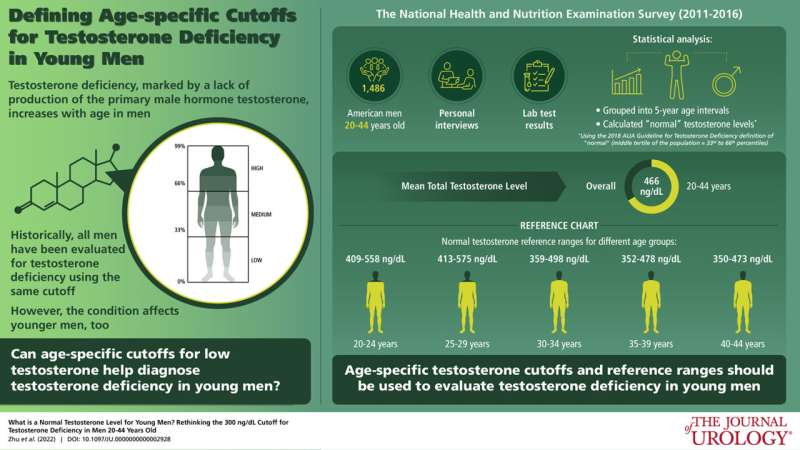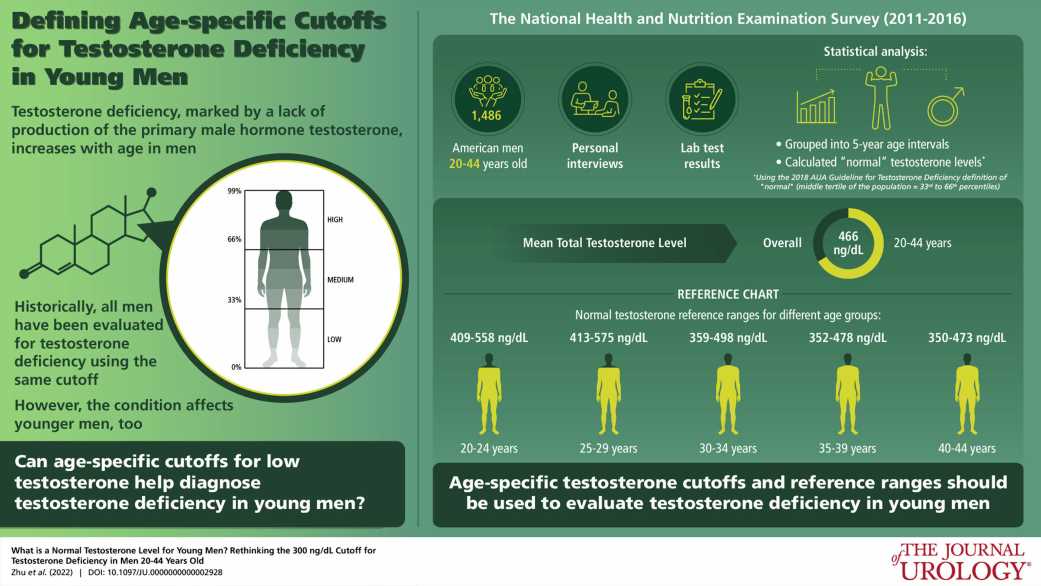
The standard cutoff point for low testosterone levels may not be accurate for men in their mid-forties and younger, reports a study in the Journal of Urology.
“Young men have different testosterone reference ranges than older men,” comments lead author Alex Zhu, DO, of University of Michigan, Ann Arbor. “Our findings suggest we should be using age-specific cutoffs when assessing testosterone levels in younger men.”
Different thresholds for low testosterone in younger men
Patients with testosterone deficiency have low levels of the male sex hormone testosterone, with related symptoms such as reduced sex drive and erectile dysfunction. Testosterone deficiency is typically regarded as a disease affecting elderly men. However, urologists are seeing a growing number of younger men with concerns related to testosterone deficiency—often with less-specific symptoms such as low energy and fatigue.
Diagnosing low testosterone in young men poses other challenges as well. The standard cutoff point for low testosterone is 300 nanograms per deciliter (300 ng/dL). However, that threshold is based on testosterone studies of older men, and overlooks the normal age-related decline in testosterone levels.
To develop a set of age-specific cutoff points, Dr. Zhu and colleagues from the University of Michigan Department of Urology analyzed data on nearly 1,500 men, aged 20 to 44 years, from a nationwide health study (the National Health and Nutrition Examination Survey, or NHANES). The study excluded men on hormone therapy or those with a history of testicular cancer or testicular removal (orchiectomy). Because of normal daily fluctuations in testosterone levels, the analysis used only morning testosterone measurements.
The range of testosterone levels was evaluated in five-year age groups. The middle tertile (one-third) of the testosterone level distribution in each five-year age group was defined as the normal range. Values below this range were used to calculate age-specific thresholds for low testosterone levels.
As expected, the testosterone levels decreased at older ages. Age specific cutoff points for low testosterone ranged from 409 ng/dL at age 20 to 24 years to 350 ng/dL at age 40 to 44 years—substantially higher than the standard cutoff point. Each one-year increase in age was associated with a 4.3 ng/dL decrease in testosterone level.
Moving away from the ‘one size fits all approach’
The study provides “the first evaluation of normative, population-based testosterone levels for young men in the United States,” according to the authors. They note that their study reflects the racial/ethnic diversity of the US population, and doesn’t exclude men with health conditions other than testicular cancer or prior orchiectomy.
Source: Read Full Article
